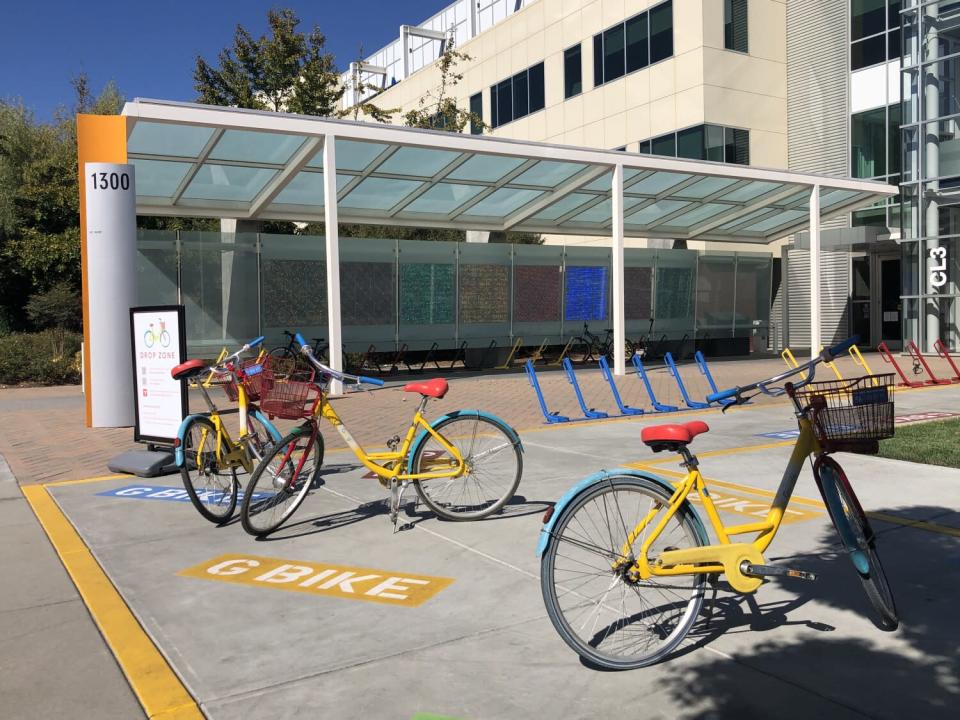
A year into the pandemic, Evan Spiegel was flying high. The chief executive of Snap said annual revenue growth of 50% or more was a “steady state opportunity” for the social media company, requiring no additional gains in audience or innovation.
These days, things are heading in a different direction. An ex-employee freshly let go from the company’s research and development wing offered this apocalyptic view of its current status: “sinking and on fire.”
On Tuesday, Spiegel announced that the parent company of the Snapchat app would be cutting about 20% of positions, making good on layoff plans that leaked to the media in early August. Facing the chopping block are investments in gaming, third-party services and original content as well as the company’s camera-equipped drones and glasses. Two stand-alone apps the company owns, Zenly and Voisey, are also “winding down.”
Tough day. We’ve parted with some damn great people at @snap who feel more like family than just coworkers.
Pouring one out for team @zenly especially — a cheeky vodka ricard or two.
Godspeed team, keep those heads high, I can’t wait to see what’s next. 🫡
— Danny Trinh (@dtrinh) August 31, 2022
For Spiegel, whose wealth Forbes estimated in May at $3.1 billion, it’s not an immediate personal crisis. “The CEO just bought a [$120-million] house,” the former R&D staffer, who asked to remain anonymous, wrote Wednesday via direct message. “So he’s doing good.”
But for employees lower in the corporate hierarchy, things aren’t so rosy. In the cafeteria of the company’s Santa Monica headquarters Wednesday morning, employees could be heard discussing the layoffs. A worker who wasn’t authorized to speak with the media said the atmosphere was downcast, with everyone knowing colleagues who would be affected.
Snap isn’t the only tech firm where workers are currently taking a beating. Meta Platforms — the umbrella company that owns Facebook, Instagram and WhatsApp — has implemented a hiring freeze in certain divisions, as has Google. Microsoft, Netflix and Twitter have all gone even further and laid off staff, though none has cut its workforce as sharply as Snap. And tech stocks, which are part of many employees’ compensation packages, are sinking.
It’s a dramatic fall from grace for an industry that was, all things considered, a pretty great one to work in during the pandemic. With humanity abruptly thrown into an era of Zoom calls, DoorDash deliveries and Peloton rides, software engineers and designers found their talents being sought after, accommodated and remunerated as never before. Work-from-home went from a common part-time perk to obligatory. A hiring surge spurred by demand for digital products and e-commerce left software engineers picking between competing job offers — or even working multiple gigs at once — while tech firms desperate to woo high-skilled staffers promised ever more generous perks, benefits and bonuses. All the while, tech stocks shot skyward.
Yet now, with belt-tightening on the rise, at Snap and elsewhere, that charmed lifestyle faces an uncertain future. Has the golden age of the tech job started to wane?
A great deal of talented, creative & kind people were let go at @Snap today.
It is with heavy hearts to say that they will be missed. If you are looking to hire some of the best in the industry impacted by the layoffs with other opportunities, kindly respond below ⬇️— Joe Darko (@joe_darko) August 31, 2022
“I think the economic conditions are certainly starting to favor management over workers,” said Nataliya Nedzhvetskaya, a UC Berkeley doctoral candidate whose research has looked at employee activism in the tech sector.
One indicator: recent efforts by big tech companies to push their employees back into brick-and-mortar offices. Apple will soon begin requiring workers to show up in person three days a week (some are resisting). Other companies have adopted even stricter policies, eliminating remote work altogether. Tech mogul Elon Musk has taken a hard-line stance at Tesla, and says he’ll be only slightly more lenient with Twitter employees if he ends up acquiring their company.
Working from home can now even mean taking a pay cut — a norm that tech giants such as Google and Twitter led the charge on.

“It’s very specific to the individual worker — the role they’re in, the skill-set that they have — in terms of the leverage they might have in their work-from-home situation,” Nedzhvetskaya said. “I don’t think you can say that’s the same across the board for all workers in tech. But I certainly think there’s more concern over job stability than there was even, you know, six months ago.”
At tech firms where telework is set to stick around permanently, managers are cracking down on other fronts.
Meta has been relatively vocal about embracing remote work in the long term. Chief Executive Mark Zuckerberg is currently pivoting the company toward building a “metaverse” of immersive virtual worlds, and virtual offices are one of his favorite use cases to talk up.
“Some types of work, especially software engineering, you can do pretty well from a lot of different places,” Zuckerberg remarked during a recent interview with podcaster Joe Rogan. “Sometimes it’s actually better to not be in the office, because then people aren’t bugging you.”
Yet amid economic struggles of its own — a recent earnings report revealed a first-ever year-over-year drop in quarterly revenue — Meta has cracked down on other COVID niceties. Bonus vacation days introduced during the pandemic are now being phased out, and the free laundry and dry cleaning services it once offered employees are long gone. In an internal call reviewed by The Verge, Zuckerberg warned that many employees haven’t been working as hard as they’ll soon need to be.
“There are probably a bunch of people at the company who shouldn’t be here,” he told staff, adding that he’ll now be “turning up the heat.”
Those workplace changes reflect a shifting economic landscape. At many tech companies, once-skyrocketing stock prices are falling back to earth. Recent earnings reports from Twitter and Snap proved disappointing, and funding for start-ups has started to evaporate. “Investor sentiment in Silicon Valley is the most negative since the dot-com crash,” venture capitalist David Sacks tweeted in May.
So many amazing people were laid off from Snap today. My heart is in a million pieces, tomorrow will be weird, and our team will never truly be the same again.
If you’re actively hiring, I’d love to share your job postings with those who were affected. ⤵️
— Tessa Kriesel (@tessak22) August 31, 2022
Yet even as a pandemic-induced period of prosperity and flexibility wanes, tech remains, broadly, an industry with a lot of upside for workers. Many chalk that up to simple economics: There’s a lot of demand for high-skill techies, but relatively limited supply.
John Chadfield — a secretary with United Tech and Allied Workers, a branch of the United Kingdom’s Communication Workers Union — said that the deficit in American tech workers gives them significant power to make demands about, for instance, whether they work from a cubicle versus a couch.
“Unemployment for these kinds of workers is still very, very low,” agreed Louis Hyman, director of Cornell University’s Institute for Workplace Studies. “Maybe they can’t choose between Google and Amazon, but they could choose [between] Google and GE. … If all companies now are software companies — which is not true entirely, but kind of true — there’s still lots of opportunities.”

“Fundamentally,” he added, “labor power comes from whether or not you can easily be replaced.”
Yet the industry isn’t homogenous. Even if software engineers working at name-brand tech companies or brandishing impressive college degrees still enjoy some leverage, their counterparts on lower rungs of the industry ladder occupy a substantially more precarious position.
The tech sector is very stratified, said Ron Hira, an associate professor in Howard University’s political science department who studies labor dynamics. Despite what pop culture might suggest, he added, not every Google employee is hanging out all day playing ping-pong.
“Most of the people who work for Google are going to be contract workers,” Hira said. “If they had agency and had power, they wouldn’t be contractors — they’d rather work directly for Google.”

For the time being, Google employees are required to show up to the office three times a week. But on a sunny Friday in late August, there was not much evidence of that policy at the company’s flagship Mountain View, Calif., campus. Empty parking spots were everywhere; the oversized chess sets dotting various manicured gardens appeared untouched.
Among the sparse blend of staffers, contractors and interns who were wandering the office park a little after lunchtime, some said the return-to-office mandate isn’t being consistently enforced.
Hanwen Ling, a recent college graduate who started working for Google Ads earlier this summer, said the prospect of hybrid work was part of what drew him to the company in the first place.
“I don’t really like full remote,” Ling said. “I kind of like this hybrid.”

Another employee, who asked to remain anonymous, said that nobody is really adhering to the three-day rule: “It’s really up to the discretion of the manager.” But, this person added, the company has begun “rolling back” stipends to help employees set up at-home offices. (Google did not respond to an email inquiring about the home-office stipends.)
Meanwhile, the slowdown in hiring has changed the texture of the job, with fewer new hands to share in tasks, the employee said: “The way it’s impacted me is I feel we’re very understaffed.”
It’s a complaint that, post-layoffs, may also soon be heard at Snap — and as the sector continues to constrict, probably other companies as well.
Times staff writer Jaimie Ding contributed to this report.
This story originally appeared in Los Angeles Times.






